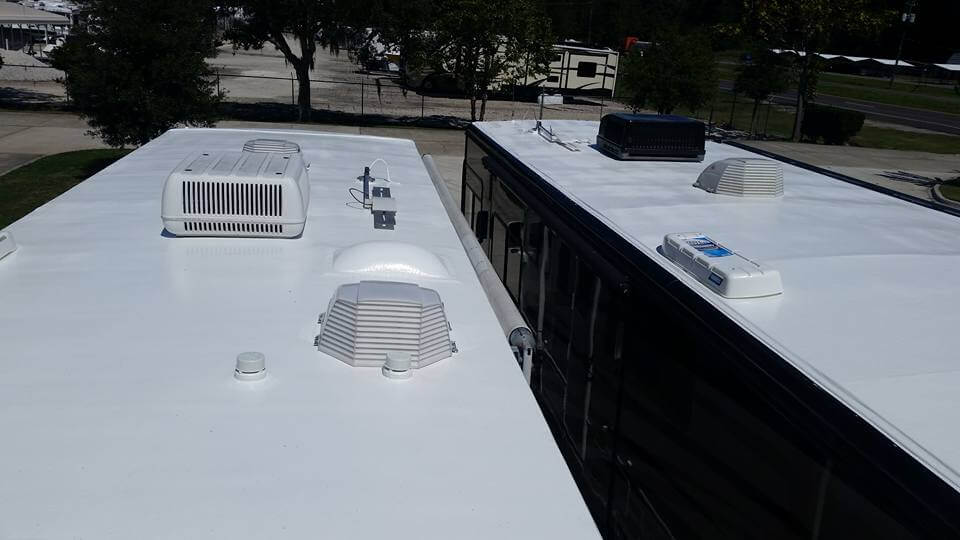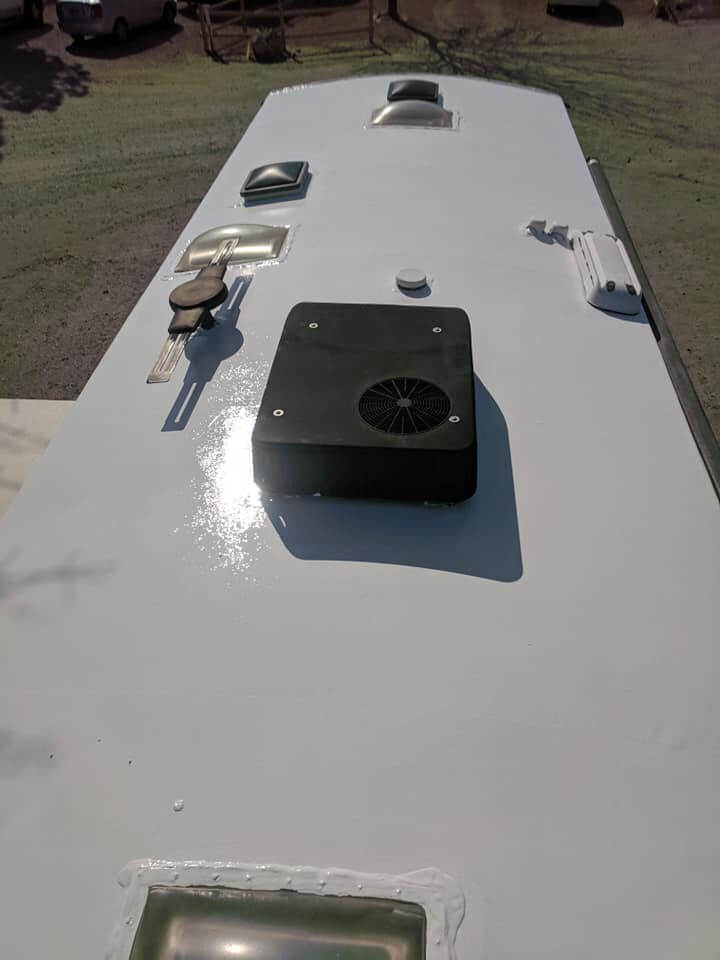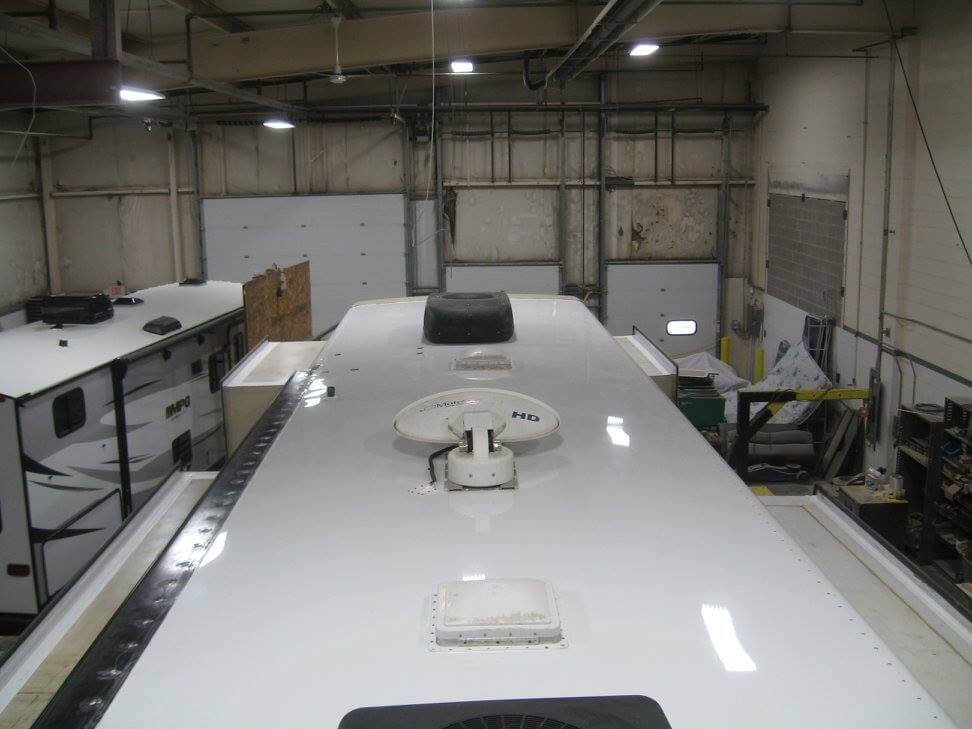Are you in the market for a new RV? If so, one of the decisions you’ll have to make is whether to go with a fiberglass roof or a rubber roof. Both have their pros and cons, so which is right for you? Here’s a look at the differences between RV fiberglass roofs and rubber roofs to help you decide.
What does mean fiberglass type RV roof?
Fiberglass is a type of material that’s made from glass fibers. It’s lightweight yet strong, making it a popular choice for a variety of applications, including boat hulls and RV roofs. Fiberglass roofs are typically thinner than rubber roofs, but they’re also more rigid.
What does mean rubber type RV roof?

Rubber is a type of material that’s made from vulcanized rubber, which is a cross-linked form of polyethylene. It’s durable and flexible, making it a popular choice for a variety of applications, including tires and RV roofs. Rubber roofs are typically thicker than fiberglass roofs, but they’re also more flexible.
Key differences between fiberglass vs rubber RV roof:
Now that you know a little bit more about each type of roofing material, let’s take a closer look at the key differences between fiberglass and rubber roofs.
Installation:
One of the biggest differences between these two types of roofs is the installation process. Fiberglass roofs must be installed by a professional, as they require special skills and equipment. Rubber roofs, on the other hand, can be installed by DIYers with some basic knowledge and tools.
Cost:
Another important difference to consider is cost. In general, fiberglass roofs are more expensive than rubber roofs. This is due to the fact that they require professional installation, as well as the materials themselves.
Durability:

When it comes to durability, both fiberglass and rubber roofs are strong and long-lasting. They are less likely to crack, leak, or peel, and they can withstand more extreme temperatures. However, fiberglass roofs can be damaged by hail or other objects, whereas rubber roofs are more resistant to impact.
Weight:
One of the biggest advantages of fiberglass roofs is that they’re much lighter than rubber roofs. This is due to the fact that they’re thinner and made from lightweight materials. As a result, fiberglass roofs put less strain on an RV’s frame and suspension.
Flexibility:
Another advantage of rubber roofs is that they’re more flexible than fiberglass roofs. This means that they’re less likely to crack or leak in situations where the RV is flexing, such as when going over bumps in the road.
Aesthetics:
When it comes to aesthetics, there are pros and cons to both types of roofs. Fiberglass roofs have a clean, sleek look that some people prefer. However, they can also be more susceptible to dirt and debris. Rubber roofs, on the other hand, have a more “rugged” look that some people prefer.
Walkability:
One of the biggest advantages of rubber roofs is that they’re more “walkable” than fiberglass roofs. This means that you can walk on them without damaging the roof or slipping and hurting yourself.
Temperature tolerance:
Another advantage of rubber roofs is that they can withstand higher temperatures than fiberglass roofs. This is due to the fact that they’re made from vulcanized rubber, which has a higher melting point. As a result, rubber roofs are less likely to warp or become damaged in hot weather.
Cleaning and maintenance:
When it comes to cleaning and maintenance, both types of roofs are easy to care for. However, fiberglass roofs may require more attention, as they’re more susceptible to dirt and debris.
Load capacity:

RV fiberglass roofs are very lightweight, which means that they can hold a lot more weight than rubber roofs. This is important if you plan on carrying a lot of gear in your RV, or if you plan on traveling in bad weather.
Weight Capacity of Fiberglass Roofs:
| Thickness | Load Capacity |
| 1/8 inch thick | 30 lbs per square foot |
| 3/16 inch thick | 45 lbs per square foot |
| 1/4 inch thick | 60 lbs per square foot |
Weight Capacity of Rubber Roofs:
| Thickness | Load Capacity |
| 3/16 inch thick | 30 lbs per square foot |
| 1/4 inch thick | 45 lbs per square foot |
| 5/16 inch thick | 60 lbs per square foot |
| 3/8 inch thick | 75 lbs per square foot |
So, if you are carrying a lot of gear in your RV or plan on traveling in bad weather, a fiberglass roof is the better option as it can hold more weight.
Lasting:
Fiberglass roofs can last up to 30 years with proper care, while rubber roofs will usually last around 10-15 years.
Noise:
One final difference to consider is noise. Fiberglass roofs are known for being quieter than rubber roofs. This is due to the fact that they’re more rigid and don’t flex as much. As a result, they don’t creak and groan as much when the RV is in motion.
So, there you have it! These are the key differences between fiberglass and rubber roofs. When deciding which type of roof is right for your RV, consider your budget, the climate you’ll be traveling in, and your own personal preferences.
When do I pick the RV fiberglass roof?
If you are looking for a roof that is easy to take care of and that will offer superior protection against the elements, then an RV fiberglass roof is the way to go. These roofs are made out of a tough, durable material that can withstand all sorts of abuse and still look great. They are also very easy to clean and maintain, making them the ideal choice for those who do not want to spend a lot of time on roof maintenance.
However, there are a few things that you should keep in mind before you purchase an RV fiberglass roof. First, these roofs can be quite expensive, so you will want to make sure that you are getting the best deal possible. Second, because they are made out of such a tough material, they can be very heavy, so you will want to make sure that you have the necessary support in place before you install them.
When do I pick the RV rubber roof?
The RV rubber roof is a great choice when you are looking for an affordable and easy-to-install roofing option. This type of roof is also great for those who are looking for a roof that is easy to maintain.
When it comes to the RV rubber roof, there are a few different things that you need to take into consideration. The first thing that you need to consider is the climate that you live in. If you live in an area that gets a lot of snow, then you may want to consider getting the RV rubber roof.
Another thing that you need to consider when it comes to the RV rubber roof is the type of vehicle that you have. If you have a Class A motorhome, then you may want to get the RV rubber roof. On the other hand, if you have a Class B motorhome, then you may want to get the RV fiberglass roof.
You also need to take into consideration the size of your RV. If you have a small RV, then you may want to get the RV rubber roof. On the other hand, if you have a large RV, then you may want to get the RV fiberglass roof.
The last thing that you need to consider when it comes to the RV rubber roof is the type of terrain that you will be driving on. If you are going to be driving on a lot of rocks, then you may want to get the RV rubber roof. On the other hand, if you are going to be driving on a lot of sand, then you may want to get the RV fiberglass roof.
Conclusion:
Both fiberglass and rubber roofs have their pros and cons. If you’re looking for a roof that is lightweight and easy to install, then fiberglass is the way to go. However, if you’re looking for a roof that is more durable and weather-resistant, then rubber is the better option. Ultimately, the decision comes down to personal preference and what you’re looking for in a roof.
Do you have experience with either type of roof? We’d love to hear about it in the comments below!

Hi I’m Joiel Borid Creators of RV Outsider. Wild Life’s first camping was started when I’m 8 years old, at the Home Front Yard. Moto of RV Outsider shares my experience, expertise, and knowledge that I learned, and apprises about my next journey. So stay tuned with RV Outsider.
